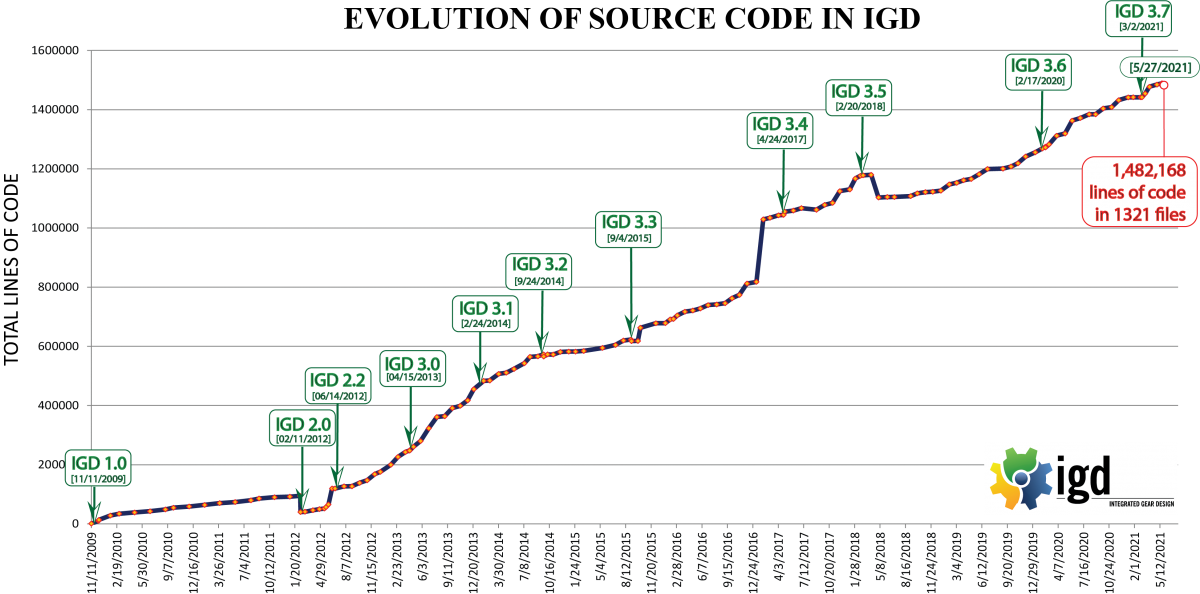IGD – Integrated Gear Design – continues growing every day. IGD version 3.7 comprises more than 1.4 million lines of code distributed in 1,321 files. It provides solutions for advanced gear design and simulation of 22 different types of gear drives, based on 115 different geometries, that make use of 16 cutting tools, and simulated by the application of 6 different tools for analysis that includes TCA, FE modeling, optimization, geometry comparison, gerotor pump analysis, and reverse engineering.

IGD has become the ultimate computational tool for the advanced design and simulation of gear drives. IGD includes a virtual gear generator of almost any type of gear. The virtual gear generator uses the geometry of the cutting tool and the kinematics of the manufacturing process to get the most accurate geometry of the gears. By using the freeform design module, surface modifications can be added and studied to localize the contact pattern and provide favorable functions of transmission errors that will contribute to reducing noise and vibration of the gear drive. The unique approach for tooth contact analysis based on the consideration of three pairs of contacting teeth allows detecting possible issues with the continuity of the process of meshing or loading sharing between consecutive pairs of teeth. Finite element models fully parametrized can be exported to main general-purpose computer programs (ABAQUS or ANSYS) for stress analysis. The finite element models may include shafts and bearings to determine errors of alignment under load that can be easily compensated by the surface modifications computed within IGD. Other simulation features include the simulation of noise and vibration excited by the loaded functions of transmission errors, variation of the meshing stiffness during the process of meshing, determination of friction power losses, efficiency, and heat generated, as well as the generation of solid models of the gears and gearset assembly for external gear simulation or 3D printing.
IGD is currently being used by the members of the RIT’s Gear Research Consortium and developed to meet their needs of advanced gear design and simulation. Do not hesitate to contact us to learn more about IGD and our RIT’s Gear Research Consortium.